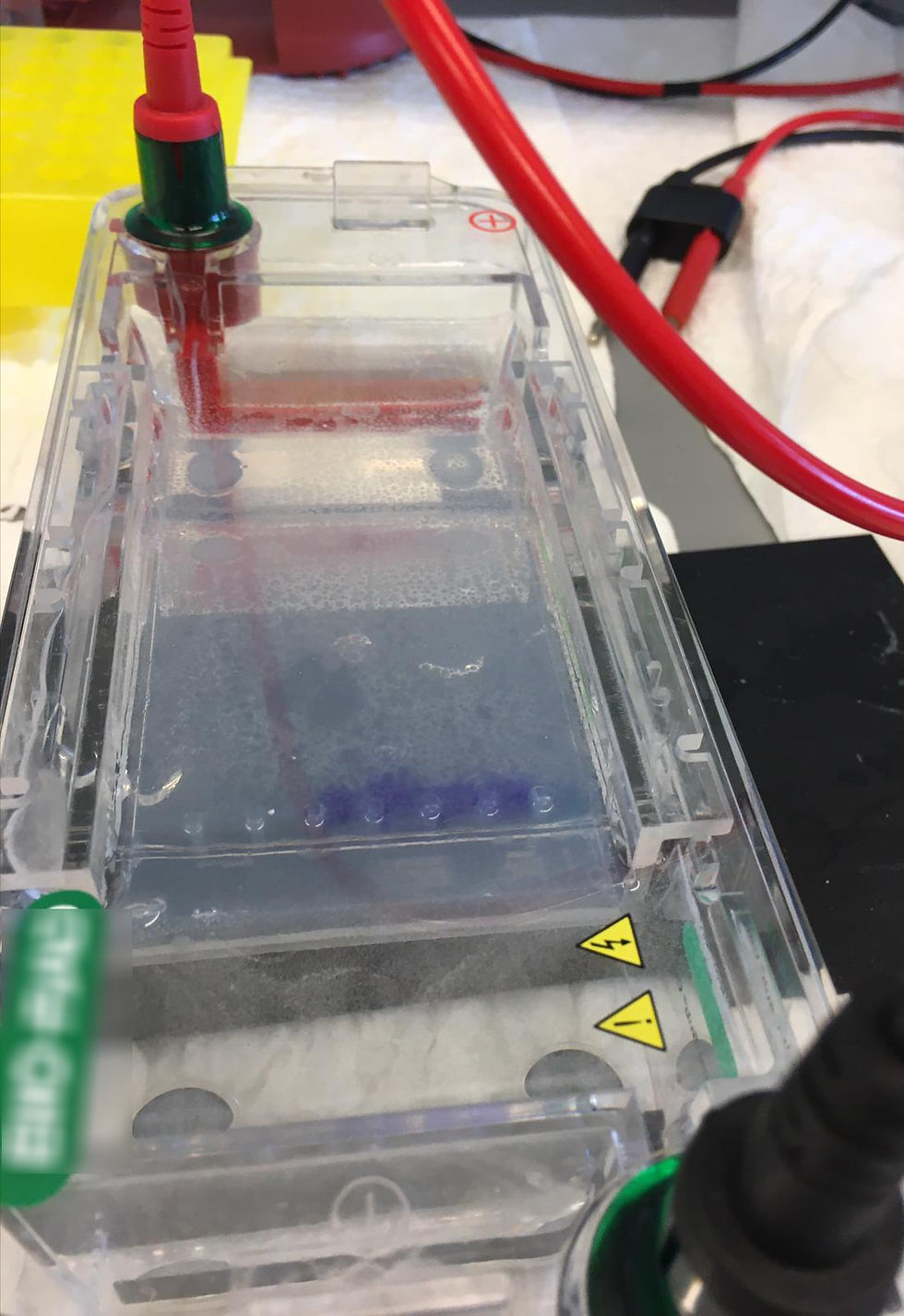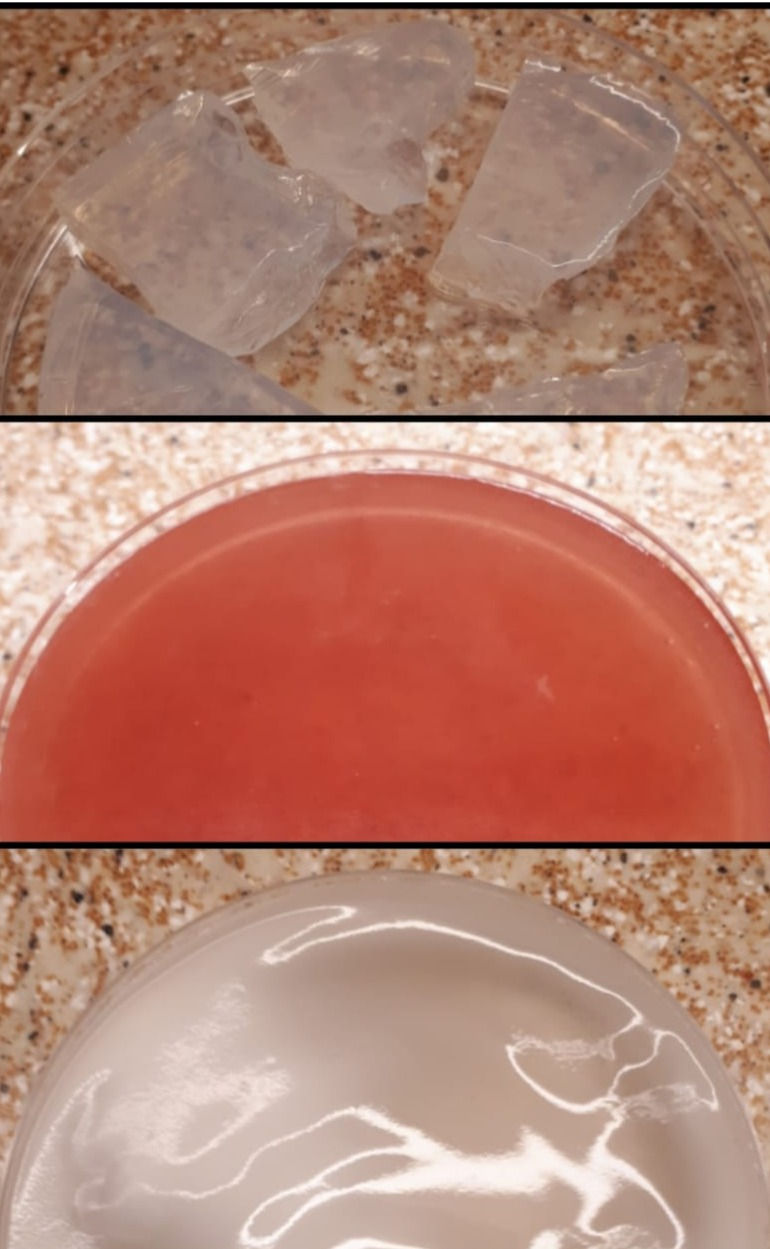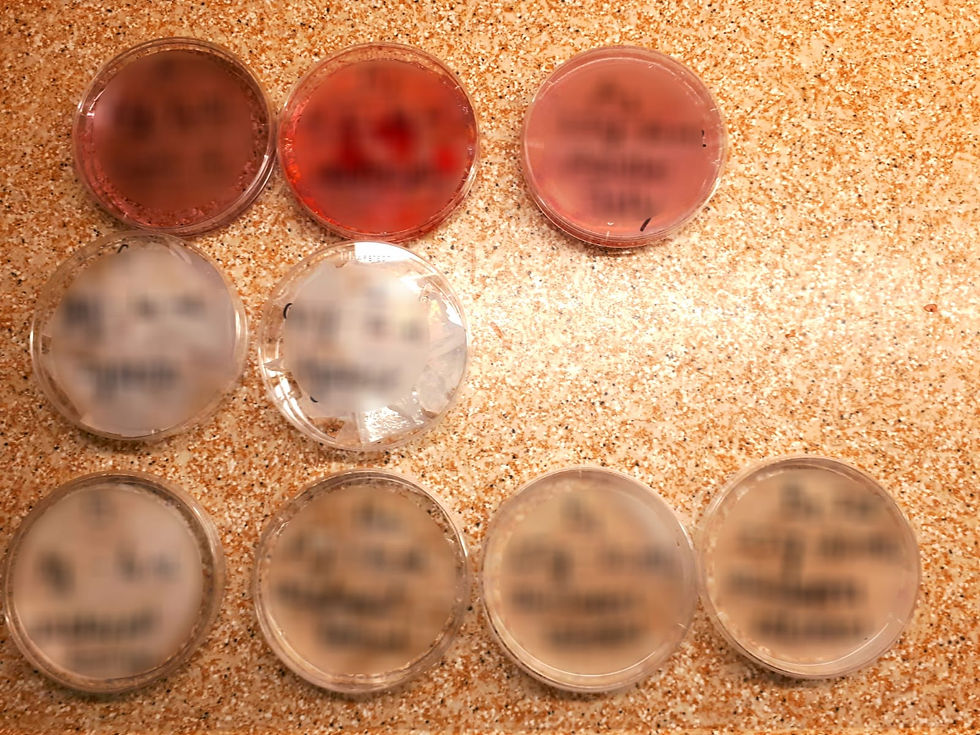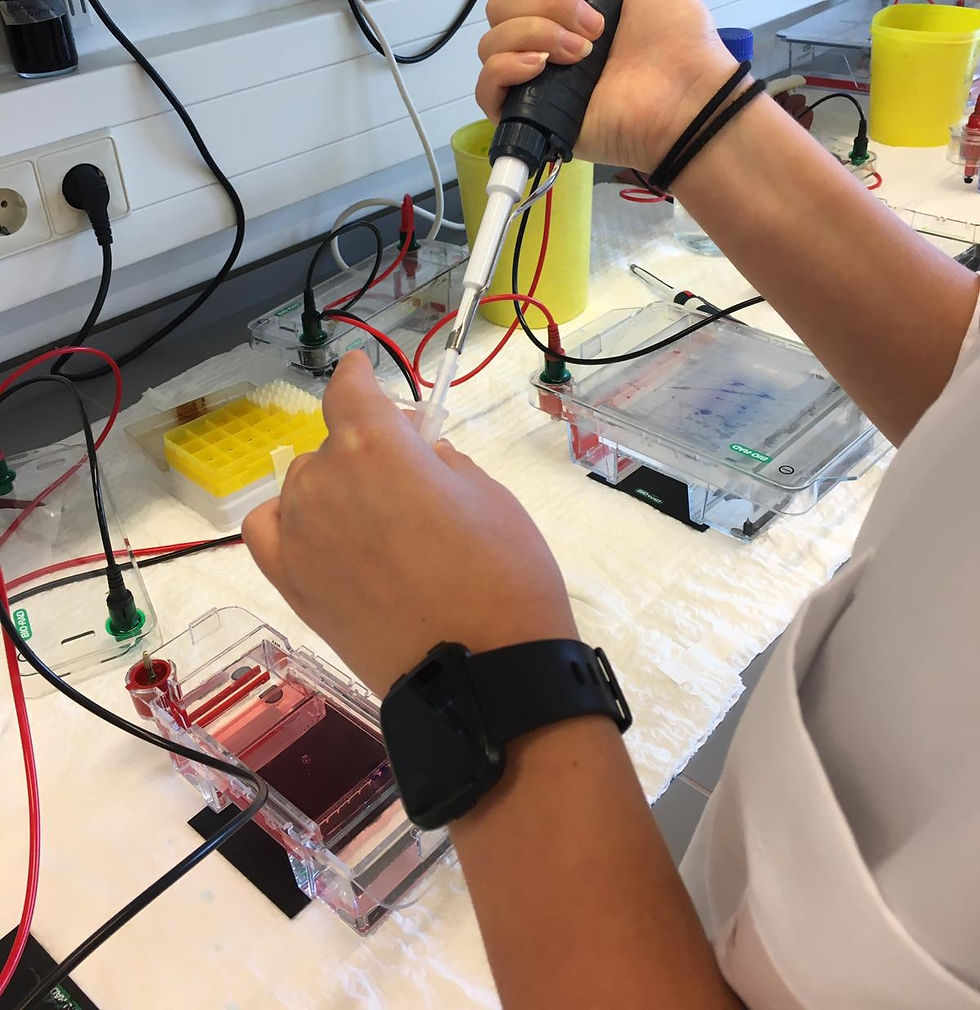Gel electrophoresis is a method to sort DNA or protein molecules. It's a qualitative analysis, which means that it's used to determine the content of a sample, not the quantity. This method is used as an intermediate step in, for example, DNA-research. In this case, the amount of DNA first needs to be increased by using the polymerase-chain-reaction, in short PCR. After this step the DNA can be used in gel electrophoresis. When this is completed, the molecules are sorted on size. This is necessary for further research.
How gel electrophoresis works

Gel electrophoresis is done in a special apparatus. The apparatus consists of a big reservoir filled with a buffer-solution (Tris-borate-EDTA) in which you can place a gel. Most of the time the gels used in gel electrophoresis are made from Polyacrylamide or Agarose. Which one is being used, depends on the molecules found in the samples, DNA or protein. While Polyacrylamide is commonly used for proteins, we use Agarose for DNA-samples. The size of the molecules is also important whilst choosing the most appropriate gel.
Both Polyacrylamide and Agarose are polymers. These polymers are joined with cross-links; atomic bonds between the polymer strands. Due to this structure the gel is really strong, although we can find little holes between every strand and little holes between every cross-link. For this reason, Polyacrylamide and Agarose are porous gels. The molecules can move through the pores.
At both ends of the reservoir an electrode is placed, positive on one side, negative on the other. When the gel is loaded with samples and the power is turned on, the molecules will start moving through the gel. Big molecules will stay close to their original position because they are too big to move through the holes in the gel. Smaller molecules will move to the other side of the gel, in the direction of the negative electrode. The DNA, or protein molecules are coloured with, for example, Ethidium Bromide, which is visible while using UV-rays. After “running the gel” you can use an UV-light to see the results.
The little experiment I did
While Polyacrylamide and Agarose gels are a great invention, they are not the first gels used for gel electrophoresis. Back in the days potato starch and strawberry jelly were used. These are by far not the same as Polyacrylamide or Agarose, but there wasn’t anything else, so it was deemed good enough.
With one of my friends I tried to do gel electrophoresis with these old gels. Before we were able to do this, we first had to find out if it was even possible to make the right gel, otherwise the rest of the experiment couldn't be done.

We tried to make several gels with different quantitities powder and TBE-buffer. Doing this wasn't only fun and interesting, it was also informative. These experiments were necessary to find the best proportions. The gels we had made proved good enough to be used in a gel electrophoresis apparatus, so we were able to perform a run.

After running the self-made gels and an Agarose gel for comparison, it was clear Agarose is the most appropriate gel for the DNA gel electrophoresis. The gels sadly enough did not produce any result, but this result is hardly surprising. If these gels worked, we would not use the newer ones because it wouldn't have been necessary to invent them. For this reason, we already knew Agarose would turn out to be the best. However, it was still worth it to do this experiment because we gained a lot of insight and new experiences, we wouldn't have been able to get when we had not done it. Gel electrophoresis as a school project is commonly done by first year Chemistry students. I got the opportunity to this, although I’m in the last year of secondary school. This was such a cool experience!

Kommentare